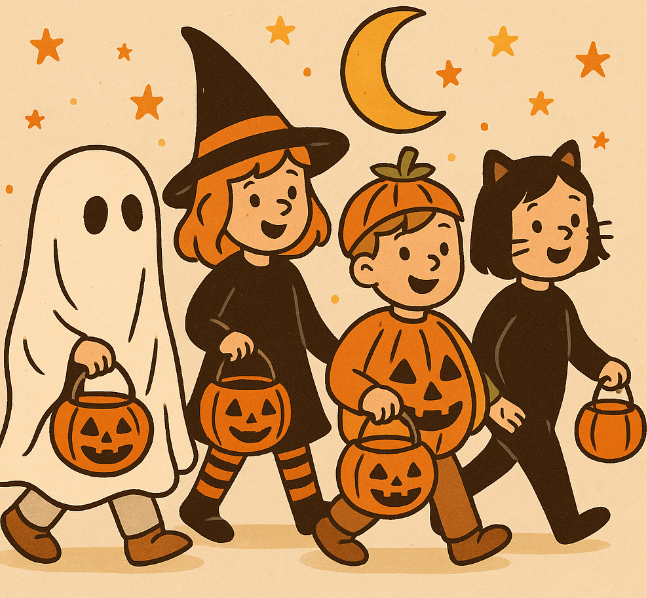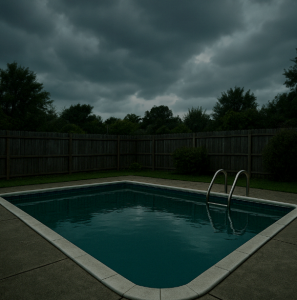
The Real Danger on Halloween Isn’t What You Think
On Halloween night, children are four times more likely to die in a car accident than on any other night of the year.
Wait—what?
For years, parents have been warned about poisoned candy, razor blades in apples, and—more recently—predators lurking behind porch lights. However, when researchers examined the numbers, the biggest Halloween threat wasn’t candy or crime. It was cars.
That doesn’t mean child safety fears are silly—it means we’ve been looking in the wrong place.
Where the Fear Came From
Halloween has always been wrapped in urban legends. In the 1970s and 80s, parents worried about tampered treats. In the 2000s, laws sprang up across the U.S. banning people on sex-offender registries from decorating homes, handing out candy, or even leaving their houses on Halloween night.
The logic was simple: Halloween puts kids in costumes, out on the streets, knocking on strangers’ doors. Wouldn’t that make it a prime hunting ground for predators?
It sounds reasonable—until you look at the actual evidence.
What the Research Found
A team of researchers (Mark Chaffin, Jill Levenson, Elizabeth Letourneau, and Paul Stern) analyzed nine years of national crime data. They looked specifically at 67,045 cases of sexual offenses against children aged 12 and under. They then compared the daily crime rates on Halloween and the two days preceding it to those on every other day of the year.
Here’s what they found:
- No spike in sexual crimes on Halloween. Rates were totally normal compared to other days.
- No unusual victim patterns. The ages, genders, and relationships of victims looked the same as on other days.
- No effect from new laws. Even as Halloween restrictions grew stricter in the 2000s, the crime rate on October 31 stayed flat.
In fact, sex crimes against children accounted for just 0.2% of all Halloween crime. The much more common Halloween offenses? Vandalism, theft, and alcohol-related incidents. chaffin-et-al-2009-how-safe-are…
Why This Matters for Schools and Families
Here’s the paradox: while child sex abuse is a devastating reality, Halloween itself isn’t uniquely dangerous.
That doesn’t mean kids are totally safe—far from it. But it does mean that lawmakers and schools may be spending energy on the wrong risks. Every hour spent enforcing “no decorations” rules for sex offenders is an hour not spent addressing real threats—like traffic safety.
As parents, teachers, and school counselors, here’s where our attention matters more:
- Road safety: More kids are hit by cars on Halloween than any other day. Glow sticks, reflective tape, and crossing guards save lives.
- Supervision: Most abuse cases happen with people children already know, not strangers handing out candy. Building protective relationships and open communication matters more than registry maps.
- Community stress: Fear-based policies can feed stigma, strain law enforcement, and distract schools from meaningful safety programs.
The Bigger Lesson About Fear
The study uncovered something bigger than Halloween safety—it revealed how fear shapes policy.
Even as child sexual abuse rates have fallen by more than 50% since 1990, public anxiety has grown. That mismatch fuels “panic policies” that may feel protective but don’t actually reduce harm.
In schools, this same pattern shows up in other ways: lockdown drills that traumatize kids without real benefit, or over-policing behaviors that could be addressed with counseling.
The takeaway? Good intentions aren’t enough. We need evidence-driven policies—whether about candy, crime, or classroom mental health.
Takeaways for Parents and Educators
So what should you do this Halloween—and beyond?
- ✅ Focus on traffic safety. Make sure kids are visible and supervised, especially near roads.
- ✅ Talk about trust. Remind children that most risks come from people they already know, and encourage open conversation.
- ✅ Advocate smart policy. Schools and communities should direct resources to real, evidence-based dangers—not myths.
Let’s Talk About It
Halloween reminds us of the power of fear in shaping parenting, teaching, and policy. The research is clear: the myths about sex crimes on Halloween just don’t hold up. But the lessons about fear, safety, and where to focus our energy? Those matter year-round.
💬 What do you think?
- What’s the biggest safety challenge you see in your school or neighborhood on Halloween?
- How can schools better balance real risks with fears?
- What myths about child safety have you heard that turned out not to be true?
Share your thoughts—we need real conversations if we want safer schools and healthier kids.

